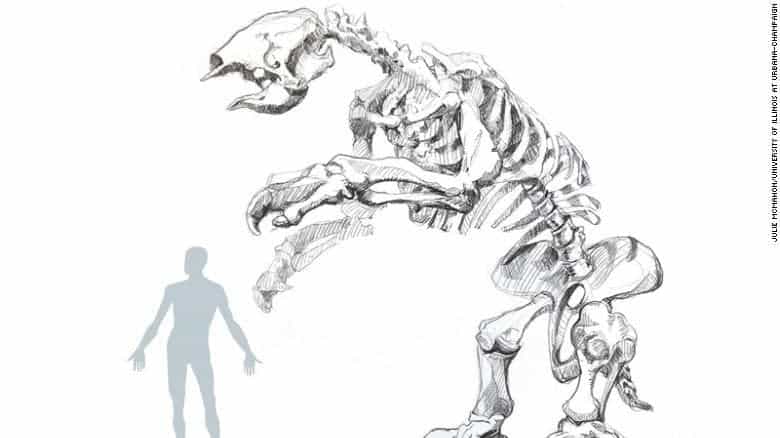
Modern paleontology allows scientists to not only tell what an extinct creature looked like but also how it lived. The exciting discovery of the remains of a giant ground sloth that lived in Belize more than 27,000 years ago is a prime example of this. By studying the extinct sloth’s fossilized tooth, researchers were able to piece together the last year of the animal’s life, revealing new insights into the lifestyle and environment of megafauna we still know little about.
Far from being slow
Tucked between the Caribbean Sea and the eastern coast of Central America, Belize is a small country richly covered in rainforest and home to great biodiversity. For instance, Belize houses the second largest barrier reef in the world. However, during the sloth’s lifetime, Belize looked totally different.
Instead of a dense jungle, Belize used to be barren and dry. This was during the Last Glacial Maximum when massive amounts of water were trapped by icy masses and sea levels were at their lowest.
This means that our sloth — which stood up to 4 meters (13 feet) tall — and other of its contemporary creatures had to subsist on little water. The need for water is what probably led the sloth to a sinkhole from which it never managed to emerge alive. It was found by divers 27,000 years later, who recovered a humerus, a femur, and part of its tooth.

Stanley Ambrose and colleagues at the University of Illinois at Urbana-Champaign faced numerous challenges analyzing the sloth’s 4-inch-long tooth. Unlike other megafaunas, such as mammoths, giant sloth teeth do not have enamel — the hard mineralized surface of teeth that traps information about what a creature ate.
Most of the tooth was also fossilized, meaning much of the original tissue was replaced by minerals. But the researchers worked with what they could. Using a technique called cathodoluminescence microscopy, Ambrose and colleagues isolated the surviving tissue from the minerals. They ended up with 20 samples of orthodentin, the main tissue that teeth are made of, which together represented about one year of growth.
“This allowed us to trace monthly and seasonal changes in the sloth’s diet and climate for the first time, and also to select the best part of the tooth for reliable radiocarbon dating,” Ambrose said in a statement.
The tissue showed that the sloth endured a nine-month dry season, with just a three-month rainy season to lighten the load. Judging from what it ate, the sloth lived in a savanna rather than a forest.

The findings show that giant sloths were far from being slow. Instead, they were highly adaptable creatures that lived through periods of great seasonal variability.
“We were able to see that this huge, social creature was able to adapt rather readily to the dry climate, shifting its subsistence to relying upon what was more available or palatable,” said Jean Larmon, lead study author and graduate student at the University of Illinois, in a statement

The giant sloth’s resilience in the face of challenging environmental conditions explains why they were so widespread and survived for so long. Climate change is one of the factors that some scholars have pinned to the giant sloth’s demise, which occurred 12,000-13,000 years ago. But the new findings suggest that the creature was highly adaptable. Human hunting now sounds like a more plausible scenario for the giant sloth’s extinction.
The findings were reported in the journal Science Advances.


